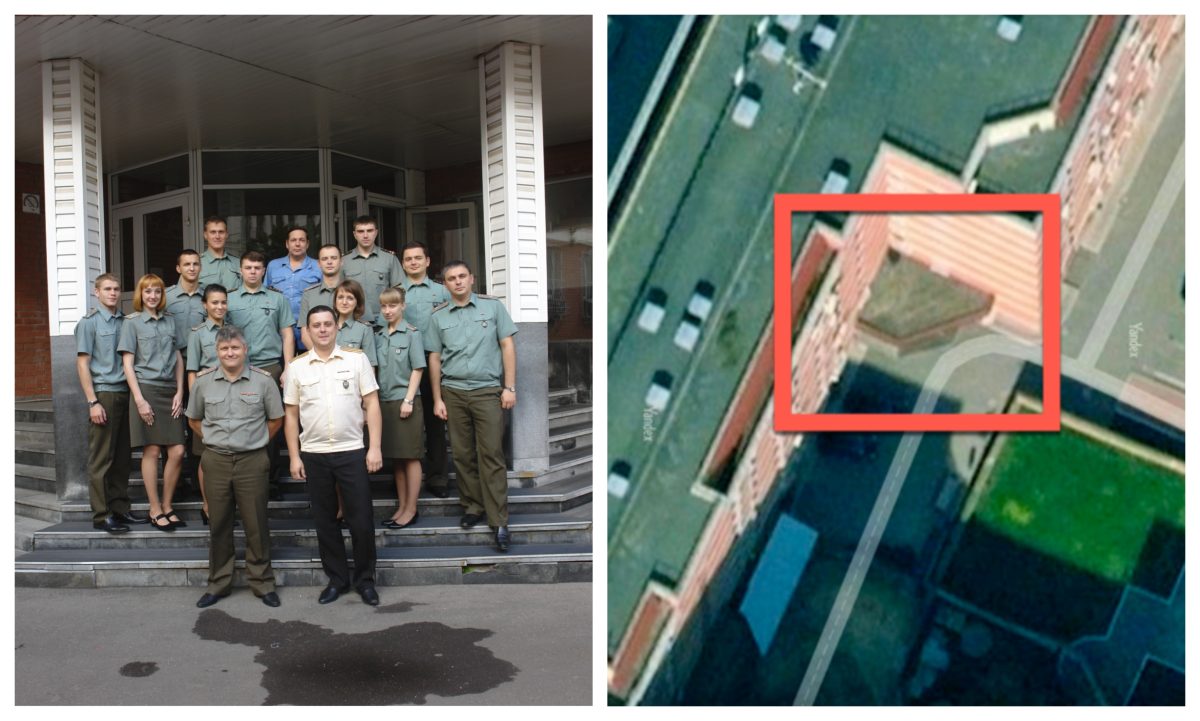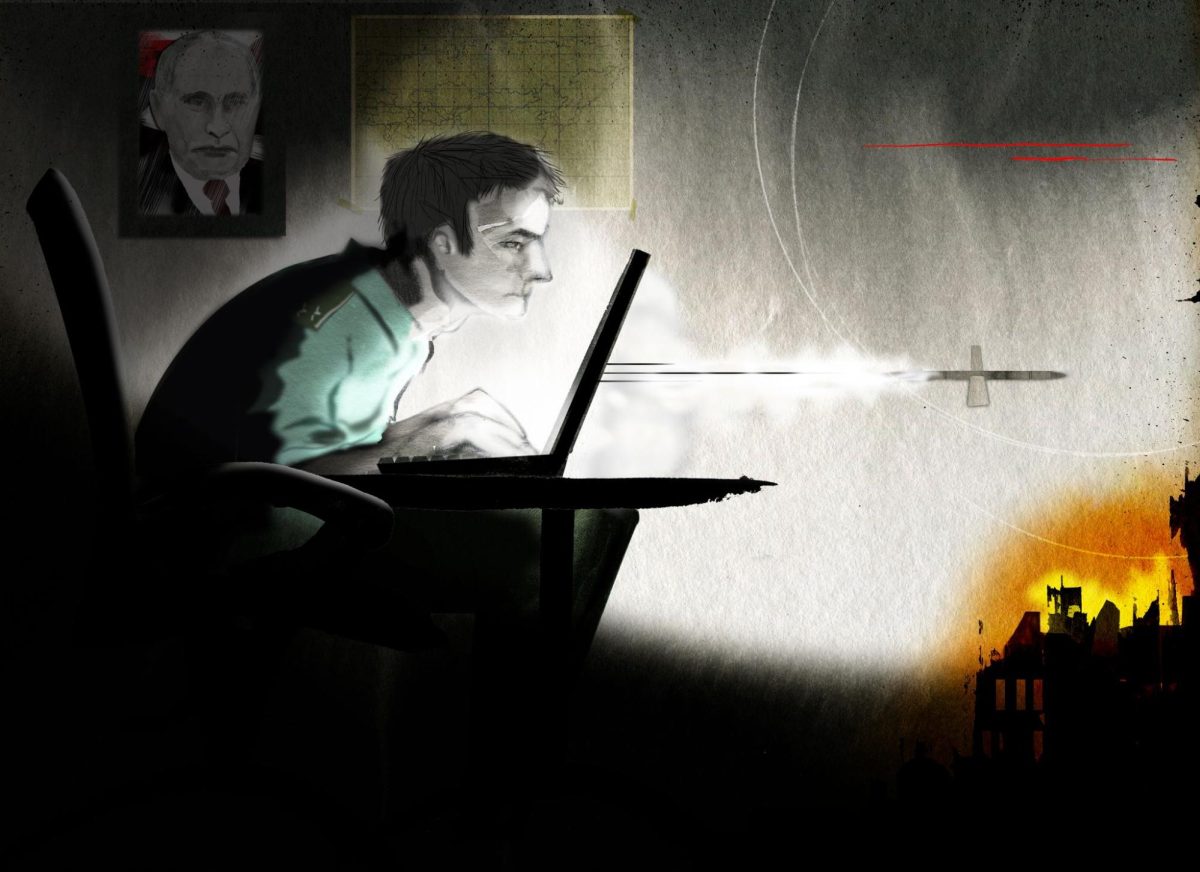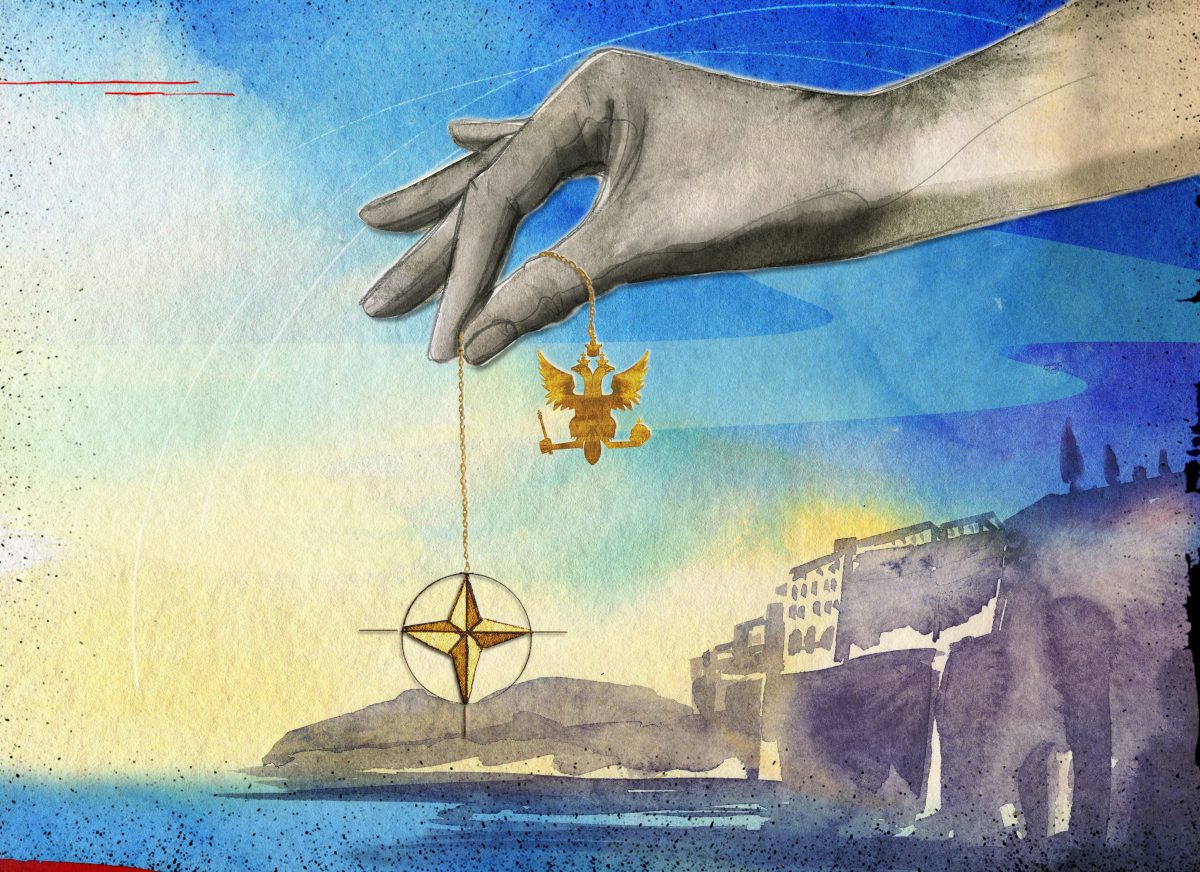Russia’s Kramatorsk ‘Facts’ Versus the Evidence
On April 8, 2022, a Tochka-U short-range ballistic missile struck the main railway station in Kramatorsk in the Donetsk region of government-controlled Ukraine. The missile killed at least 50 people, including five children. Civilians had gathered at the station to flee the approaching Russian offensive, which has pivoted to the country’s east in recent weeks.
A recent BBC report stated it had found “clear evidence” that the missile which struck the station had a cluster munitions warhead.
Russian officials have blamed the strike on Ukraine, citing claims that the Russian military does not use the Tochka-U. Pro-Russian media cited other assertions relating to the missile’s serial number, and a hypothesised flight path of the missile.
Bellingcat, and others in the open source community, have cross-referenced these claims with publicly available footage in an attempt to establish the origin of the Tochka-U missile that took dozens of lives at the Kramatorsk railway station on April 8.
At the time of writing, the available open source evidence remains insufficient to reveal all details about the strike, including the direction of origin of the missile. However, it does appear to debunk a central argument by the Russian state in its defence: that its military does not operate the Tochka-U missile system.
Social media images and videos as well as Russian news reports from 2021 show the country’s forces displaying Tochka-U launchers, while satellite imagery from February 2022 seems to depict military vehicles consistent with the appearance and dimensions of the launchers at a base in south-western Russia. Experts Bellingcat spoke to also said that even though Russia has reportedly phased out the Tochka-U missile in recent years, that doesn’t render Russia’s stock of the weapons inoperable or mean they cannot still be deployed. Amnesty International, meanwhile, stated that a Tochka-U missile was used by Russia in Donetsk on 24 February 2022.
Before the Attack
On April 7, the day prior to the strike on the Kramatorsk station, the chairman of the board of the Ukrainian railroads Oleksandr Kamyshin wrote on Telegram that a Russian airstrike at Barvinkove station in the neighbouring Kharkiv region had blocked trains evacuating civilians from Slovyansk and Kramatorsk. Later that night, Kamyshin reported that the obstacle had been cleared and that the affected trains were able to complete their journeys.
That same day, a popular Russian pro-war Telegram channel advised civilians evacuating the two cities against travelling by rail, likely in light of the air strike.
On the morning of April 8, at 10:13 am Kyiv time, the Russian Ministry of Defence claimed in a Telegram post that it had carried out “air-based” missile strikes against materiel for Ukrainian military reserves arriving at Pokrovsk, Slovyansk and Barvinkove railway stations. In the minutes that followed, local Telegram channels in non-government controlled areas of the Donetsk region were flooded with footage of missile launches.
Less than 20 minutes later, reports emerged that Kramatorsk was under fire. By 10:44 am, Kamyshin announced on his Telegram channel that two missiles had struck the Kramatorsk railway station.
At 11:01 am Dmitry Steshin, a correspondent for the pro-Kremlin tabloid Komsomolskaya Pravda, posted a video to his Telegram channel adding that explosions had been heard 10 minutes prior at the Kramatorsk railway station, apparently targeted at a large group of Ukrainian soldiers. The fact that Steshin deleted the post shortly afterwards did not go unnoticed by journalists.
It seems implausible that Steshin, widely known for his strongly pro-Russian positions, could have filmed the video himself in a city then under Ukrainian control. Nevertheless, the video he uploaded and the caption he added were widely shared by pro-Kremlin Telegram channels. As Russian independent news outlet MediaZona noted, these posts can still be found online.
"Работают по скоплению боевиков ВСУ"https://t.co/mRdWVzyDyo #Краматорск #warcrimes pic.twitter.com/16tpns8ugY
— Necro Mancer (@666_mancer) April 8, 2022
An hour later, the Russian Ministry of Defence (MoD) denied any culpability. Its statement emphasised that the missile found in Kramatorsk was a Tochka-U — a type which it claimed Russia did not operate. Steshin also made this claim on his Twitter account, alleging that the Russian military had not used the Tochka-U for 30 years.
In an updated statement, the Russian MoD later claimed that the Ukrainian 19th Missile Brigade had fired the Tochka-U missiles at Kramatorsk from Dobropillya, a town to the southwest of Kramatorsk.
The statement also insisted that open source videos showing Russian-operated Tochka-Us in fact showed the same model of missile operated by the Belarusian military during joint Russian-Belarusian exercises leading up to Russia’s invasion of Ukraine. However, other open source evidence appears to contradict this.
This is not the first time that Russia has denied operating the Tochka-U missile system. On March 16, two days after a missile struck the centre of Donetsk, Russia’s mission to the UN also denied that its military used the weapon.
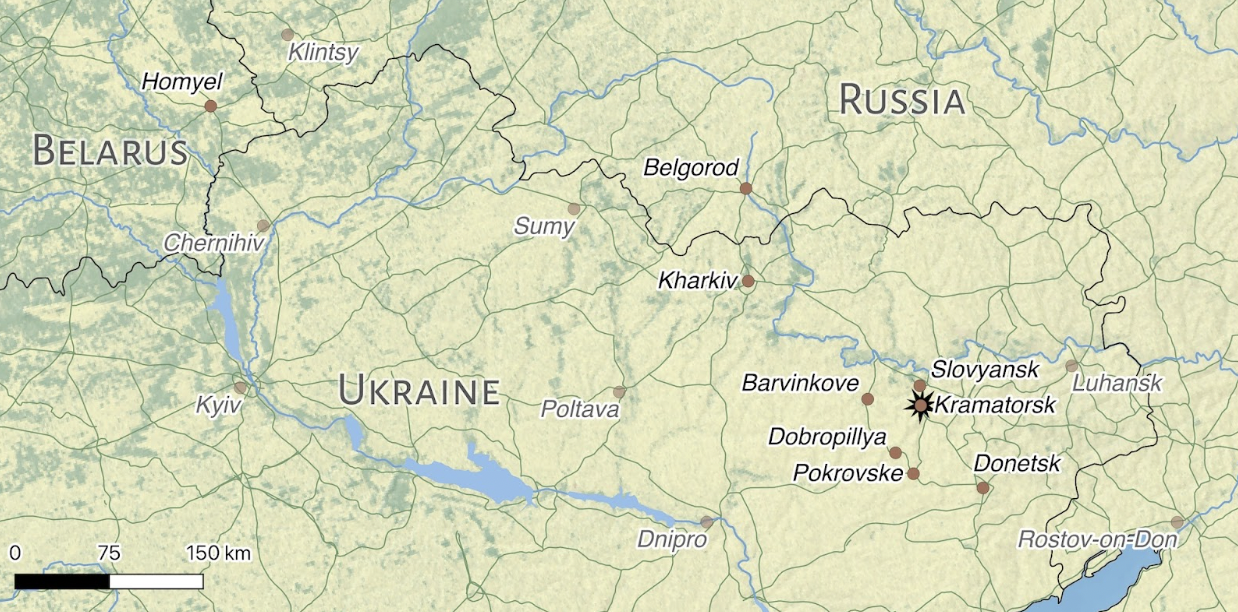
A map of eastern Ukraine. Credit: Logan Williams / Bellingcat / Natural Earth.
The Tochka-U Question
The Tochka-U missile plays a central role in the Russian authorities’ insistence that their armed forces could not possibly have been behind the missile strike on Kramatorsk. Namely, they insist that the Russian military has phased out use of this ballistic missile.
These claims are seemingly in line with a recent modernisation drive for Russia’s military. In June 2020, state media website Interfax reported that the entire Russian military had updated its missile systems, replacing the Tochka-U with the more modern Iskander.
Scott LaFoy, Director of Nuclear and Technology Security Programs at Exiger Government Solutions, who has spent his career as an open source analyst focusing on ballistic missiles and nuclear weapons systems, told Bellingcat that Russia “didn’t exactly throw them all in a river” when describing what it may have done with the leftover Tochka series.
“We’ve seen legacy equipment deployed by Russia before, and Tochka-Us are valuable munitions that can offset expensive Iskander costs, allowing Russia to burn legacy inventory instead of purely new, expensive munitions”, he added.
Open source evidence also indicates that Tochka-U missiles have been spotted on several occasions during the invasion of Ukraine.
According to the Conflict Intelligence Team (CIT), a reporting partner of Bellingcat, a train loaded with Tochka-U launchers and loader vehicles (based on the BAZ 5921 and 5922 chasses, respectively) moved from Homyel in Belarus to the Russian city of Belgorod in late March. CIT cited a March 30 video which was posted to Twitter by the prominent user GirkinGirkin, showing the launchers being transported by train.
Moreover, in late March this year, a train carrying Tochka-U missile launchers was filmed in Gomel, Belarus.
The launchers's V markings indicate they are Russian, as we have not seen any Belarusian vehicles with such markings.https://t.co/KCCIeH1b4w pic.twitter.com/ifcOT3UZZn
— CIT (en) (@CITeam_en) April 8, 2022
This would be in line with the ongoing Russian retreat from the Kyiv front and consolidation in the east. The vehicles were marked with ‘V’ tactical marks, which are used by the Russian armed forces involved in the war against Ukraine. The Belarusian military, which has not formally entered the war, is not known to use these markings.
The Hajun Project, a group of anonymous Belarusian researchers, posted images of these same vehicles on Twitter on March 18. The team claimed that the launchers had arrived in Belarus’ Minsk region on a Russian Air Force An-124 as an additional batch to supplement Russian Tochka-Us which had already arrived earlier in the month. Bellingcat was unable to independently verify this claim.
In the March 18 pictures, the vehicles did not yet have their ‘V’ tactical marks and still had their original numbers painted on. Judging by their similar wear and camouflage patterns, these vehicles appeared to be the same as those seen heading towards Belgorod by railway.
⚡️New batch of Tochka-U tactical ballistic missiles was brought to Belarus.
Today at 14:12 (Minsk time), Russian An-124 Ruslan heavy cargo aircraft landed at the airfield in Machulishchy (Minsk region).
1/3 ⬇️ pic.twitter.com/Uk1m3bHifL— Belarusian Hajun project (@MotolkoHelp) March 18, 2022
Гомель pic.twitter.com/YLesW3sSZQ
— IgorGirkin (@GirkinGirkin) March 31, 2022
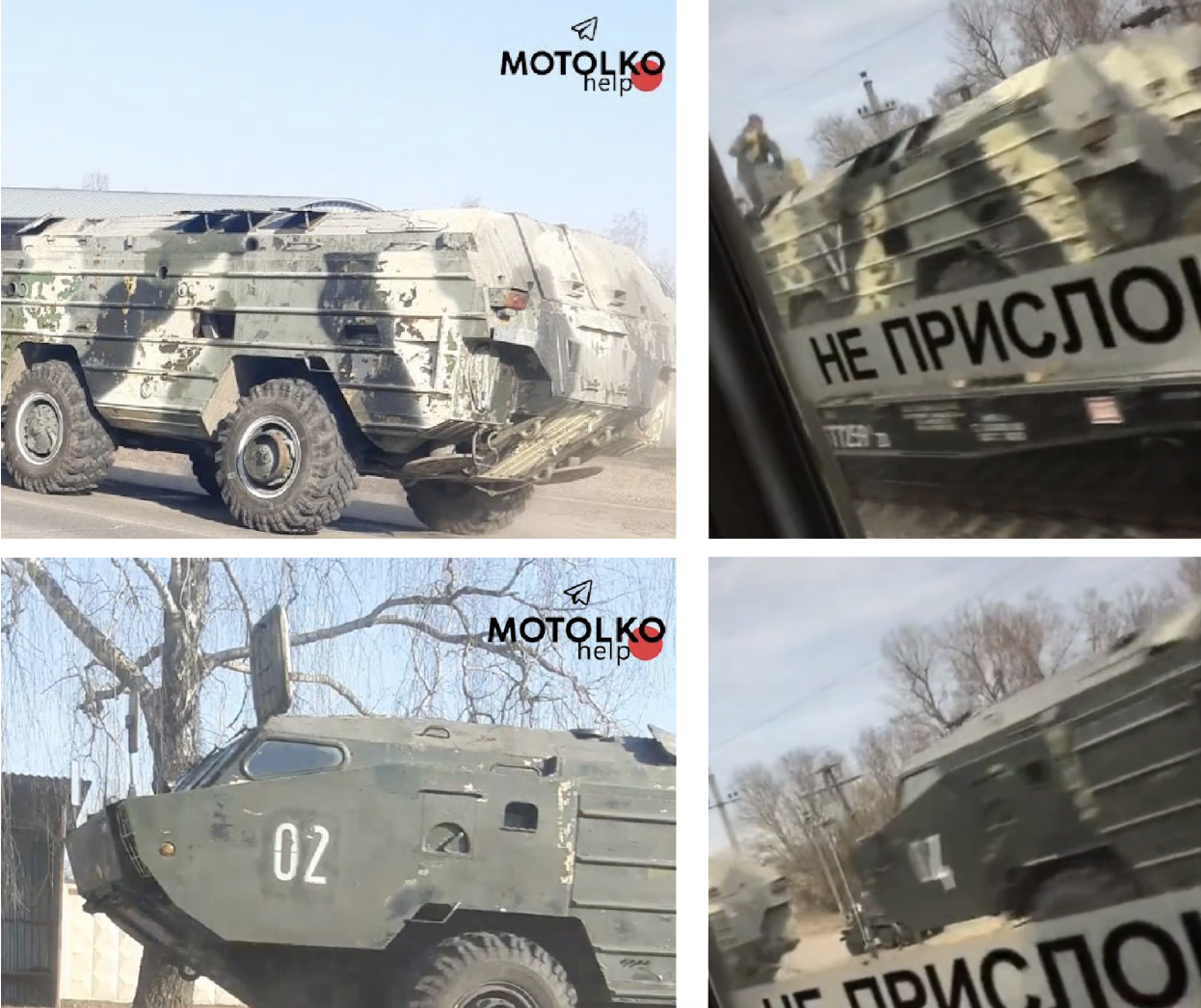
Comparison between Russian Tochka-U launchers seen in Belarus on March 18 and heading towards Belgorod on March 30, 2022. Note the seemingly identical wear and camouflage markings. The painted number two appears to have been replaced by a number four in the bottom image comparison, although the other wear and markings on the side remain identical.
In addition to these images of Tochka-U launchers, further open source evidence indicates that the Russian military has by its own admission fielded this particular missile system as recently as last year.
As pointed out by CIT, the Russian 47th Missile Brigade still appears to operate the systems. In February 2021 they appeared in a broadcast by the Kuban 24 news station from an open house day at the 47th Missile Brigade’s garrison.
Furthermore Rob Lee, a Senior Fellow at the Foreign Policy Research Institute (FPRI) wrote that in April 2021, during a previous Russian military buildup on its border with Ukraine, vehicles which he believed resembled Tochka-Us could be seen moving through Rostov Oblast.
Tochka-Us could again be seen in May 2021 when they took part in a Victory Day parade in the southern city of Krasnodar. The narrator of this video, once again broadcast by Kuban 24, clearly names the missile systems as a Tochka-U.
The 47th Missile Brigade falls under the 8th Combined Arms Army, which is reportedly currently fighting in the Donbas. In a 2020 presentation to the Organisation for Security Cooperation in Europe (OCSE), the 8th Combined Arms Army was accused by Ukrainian military representatives of having command over the “separatist” 1st and 2nd Army Corps of the self-proclaimed “Donetsk and Luhansk People’s Republics,” respectively.
An image uploaded on October 3, 2021, to the Russian social media network VK showed two soldiers atop what appeared to be a Tochka-U loader vehicle. The user’s profile indicates that he has recently served in the Russian armed forces. The image was geotagged to the 47th Missile Brigade’s garrison.
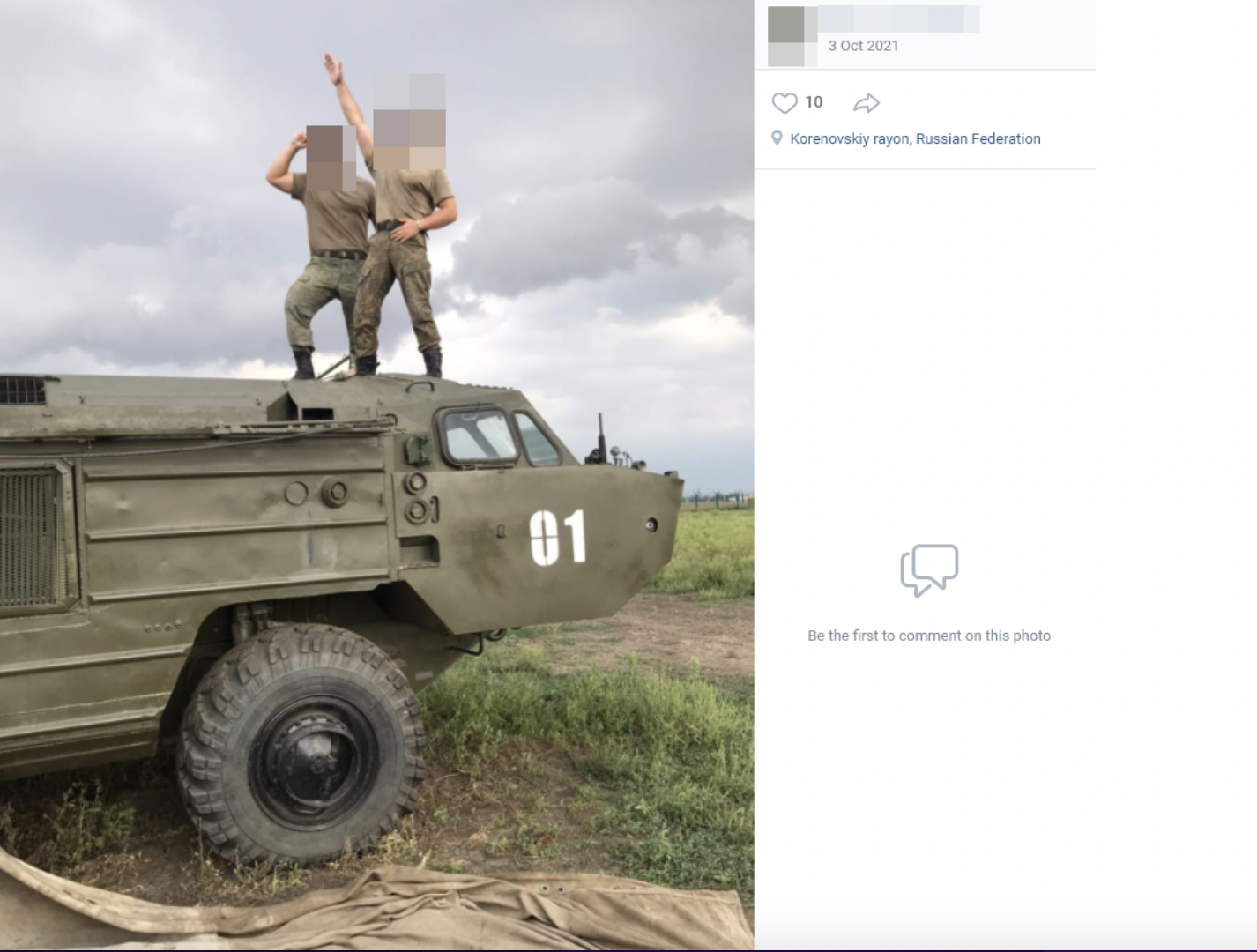
An image taken from the VK page that appears to show Russian soldiers atop a Tochka-U laoder vehicle posted in October 2021.
On January 21, 2022, TASS reported that Iskander-M missiles were delivered to the 47th Missile Brigade ahead of schedule. Given how recently the delivery apparently occurred, it is unclear whether the brigade has completed training and adoption of the Iskander-M systems from Tochka-U, as pointed out by CIT.
Satellite imagery of the 47th Missile Brigade’s garrison (45.5207962801, 39.3634004539) also shows that vehicles with measurements (six wheels, approximately 9.5 metres in length) consistent with Tochka-U launchers and loaders as recently as February 2022. However, more detailed imagery would be required to be absolutely conclusive about the Tochka-U’s presence there at this time.
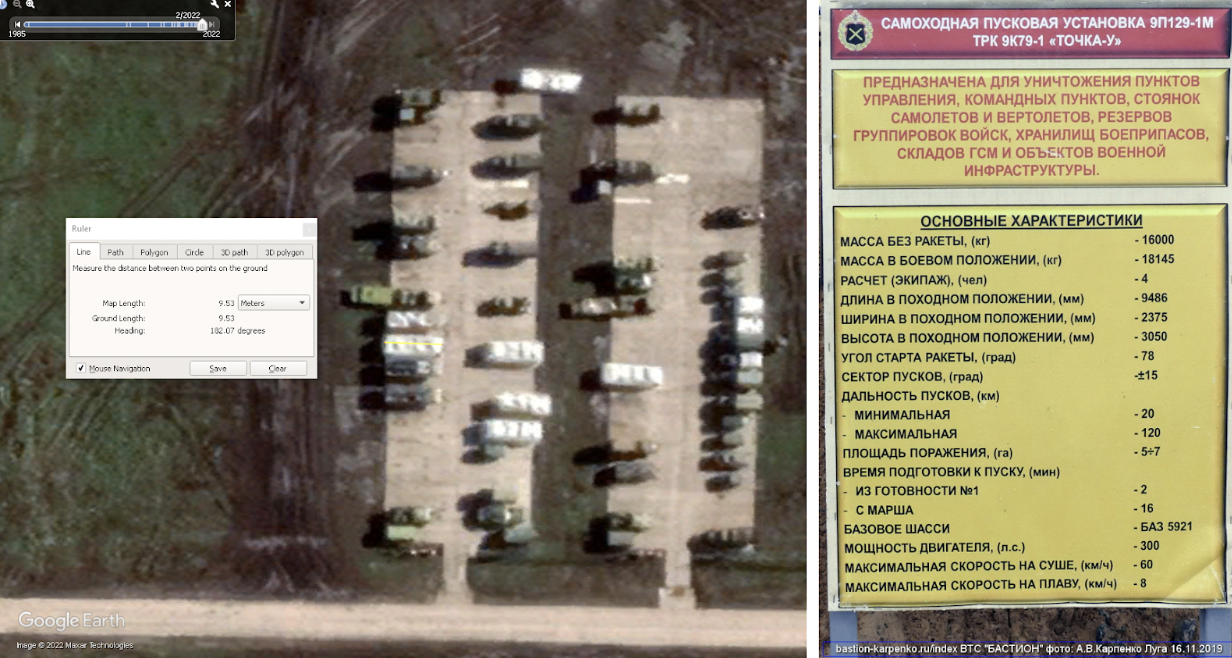
Left: Satellite imagery from Google Earth showing vehicles that match the dimensions of Tochka-U launchers and loaders near Korenovsk. Right: The dimensions of the Tochka-U launchers and loaders are listed on the Bastion Karpenko website (“длина в походном положении 9486”, which translates as length in the stowed position 9,486 cm).
More recently, according to Amnesty International, Russia deployed Tochka-U missiles during the first days of the invasion. Amnesty’s weapons investigator found that remains of the weapon that hit a hospital in Vuhledar in Eastern Ukraine bore the hallmarks of a Tochka-U missile.
The Aftermath
In addition to the spot where the missile body of the missile landed, about 50 metres south-west of the main station building in Kramatorsk, five impact points were clearly identifiable.
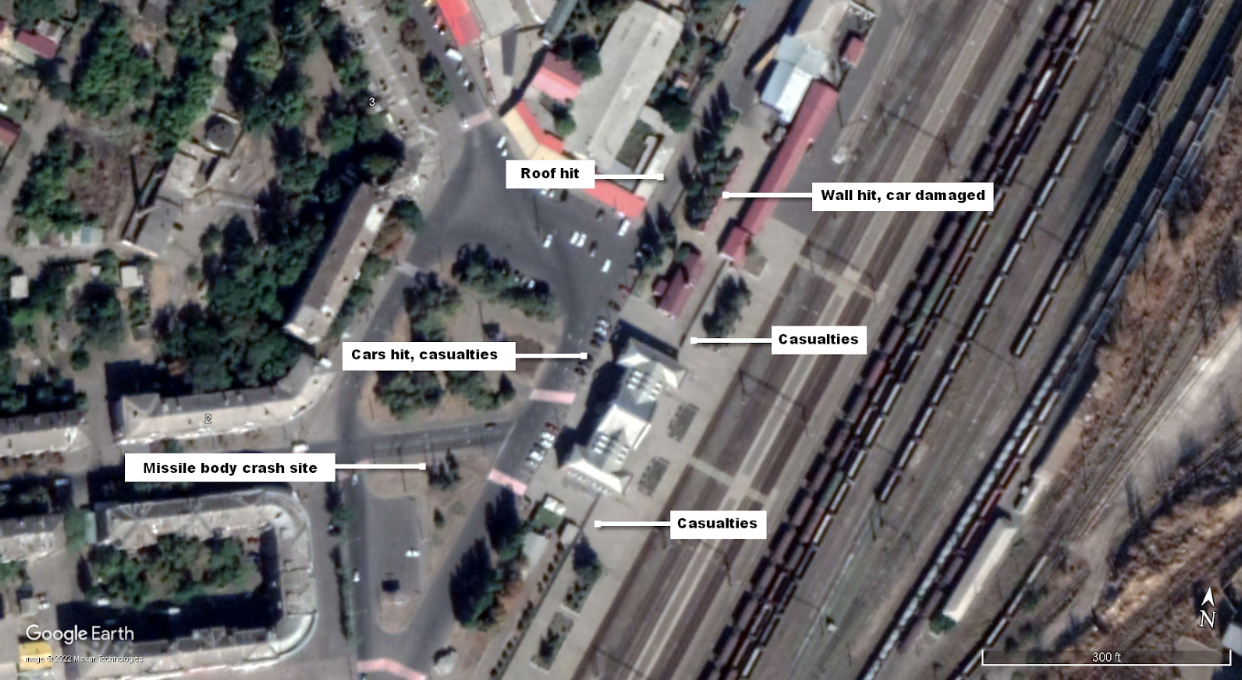
A map detailing impact sites around the Kramatorsk railway station (Image: Google Earth. Markings: Bellingcat).
In footage showing the aftermath of the strike, the roof of a building to the northernmost part of the affected area suffered damage, likely due to impact from a submunition.
Further south, a crater appeared on the ground, at the base of another south-southeast facing wall. Several casualties were also observed at this location.
On the western side of the station building, a line of parked cars were seen burning, and human remains were visible in later open source imagery from this area.
It is likely one of the vehicles was hit directly with a submunition. A clear splash mark indicating cluster munition use was visible to the south of the station building. A large number of casualties were initially observed at this location.
Nearby, the east-southeast facing wall of a building appeared to have been hit directly by a submunition, damaging a car. This could potentially be read as indicating a launch direction. However, when asked by Bellingcat, Markus Schiller of ST Analytics, a Munich-based consultancy that specialises in space technology and rocketry, stated that it is far more likely that the submunition detonated on the car given the angle at which the submunitions from the Tochka-U would have been released .
“The missile probably triggered the cluster explosion at 2,250 m(etres) at an angle of around 80 degrees, so the cassettes with their stabilisers will be falling down at very close to 90 degrees. With that, it seems more plausible to me that the car was hit by the cassette, not the wall. The wall just broke due to the shockwave”, Schiller said. This would mean it would likely not be possible to assess a launch direction from damage seen on the wall.
Information shared on pro-Russian Telegram channels, meanwhile, compared the area where the missile’s missile body landed with the general impact zone of the cluster munitions. Several versions exist of these graphics, but the general trend has them pointing in a south-westerly direction, back into government-held territory.
However, the experts contacted by Bellingcat again suggested that the direction of the submunitions and missile fragments are not in themselves useful evidence of its precise origin.
According to Schiller, once the submunitions are deployed (at around two kilometres from impact), the remaining body of the missile likely becomes far less stable due to the change in weight dispersal. After this, it will not behave like a traditional projectile when falling down, Schiller said. “With that, I would not interpret anything into the impact position of the missile body,” he added.
LaFoy broadly agreed. “The orientation of the booster on the ground will have basically no indication of the trajectory,” he said.
“While the orientation points to a generally eastern point of origin, it is not clearly determinable because the booster has a lot of room to tumble off-trajectory”, La Foy stated. “So if it is laying north-south, east, west, backwards, doesn’t really matter”.
A Soviet Serial Number
Another claim circulating on pro-Russian Telegram groups and Twitter was that the serial number visible on the missile wreckage southwest of the station building was allegedly in the same range as missiles used by the Ukrainian military.
While serial number ranges might be useful to determine ownership of other weapons, this does not appear to be the case for Tochka-U missiles. The Ukrainian Ministry of Defence told Bellingcat in email correspondence that the missiles were manufactured within Soviet Russia and delivered to storage bases, arsenals, and missile brigades across the USSR.

Image allegedly proving Ukrainian culpability in the missile strike on Kramatorsk. From the Telegram channel of Russian state official Alexey Rogozin, son of Dmitry Rogozin, former director of Russia’s space agency Roskosmos.
To prove this point, they added that a Tochka-U missile with the number VG910840 was used by Ukraine in 2014, landing in the town of Snizhne, while also pointing out that another was documented four years later in Syria (where Russia has militarily backed President Bashar al Assad) with a serial number just 25 digits higher (VG910865).
This appears to match open source evidence from both Snizhne and Syria.
Large amounts of footage emerged from the separatist-held towns of Khartsyzk, Zuhres, Shakhtyorsk, and Torez on 8 April showing several missile launches in the minutes preceding the Kramatorsk hit from areas south of the towns. Due to limited visibility, it was not possible to determine which missiles were used, or what they targeted.
However, no footage has emerged of a launch site located south-west of Kramatorsk, whether in Ukraine-held or in Russia-held territory. This still leaves the biggest question regarding the April 8 strike on Kramatorsk station open, exactly where the missile originated.
Still, efforts to spread disinformation about the tragedy continue. Most recently, a clip distributed on social media bearing the BBC’s logo claimed Ukrainian responsibility for the missile strike on Kramatorsk railway station. The news network has clarified that it did not create the clip, which The Guardian noted was broadcast on Russian state media.
Correction: This article previously stated that the missile body landed north-west of the Kramatorsk railway station building when it landed to the south-west. The text has been updated to reflect this.
Bellingcat is a non-profit and the ability to carry out our work is dependent on the kind support of individual donors. If you would like to support our work, you can do so here. You can also subscribe to our Patreon channel here. Subscribe to our Newsletter and follow us on Twitter here.

